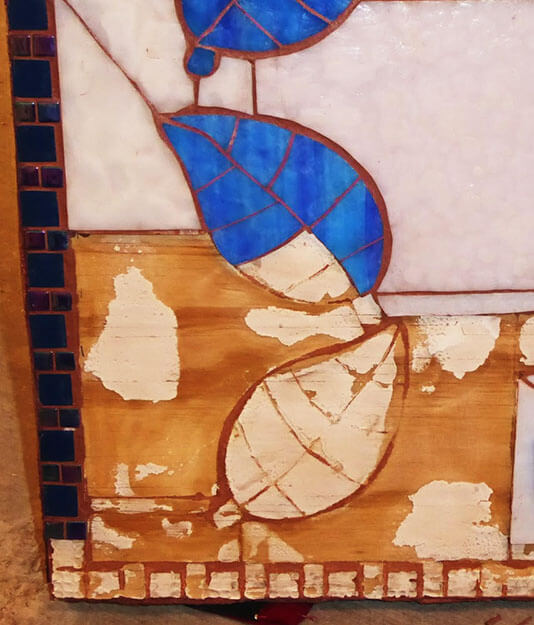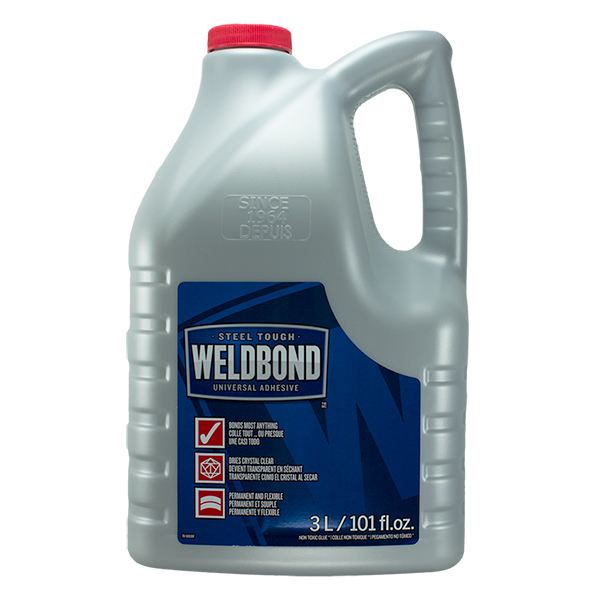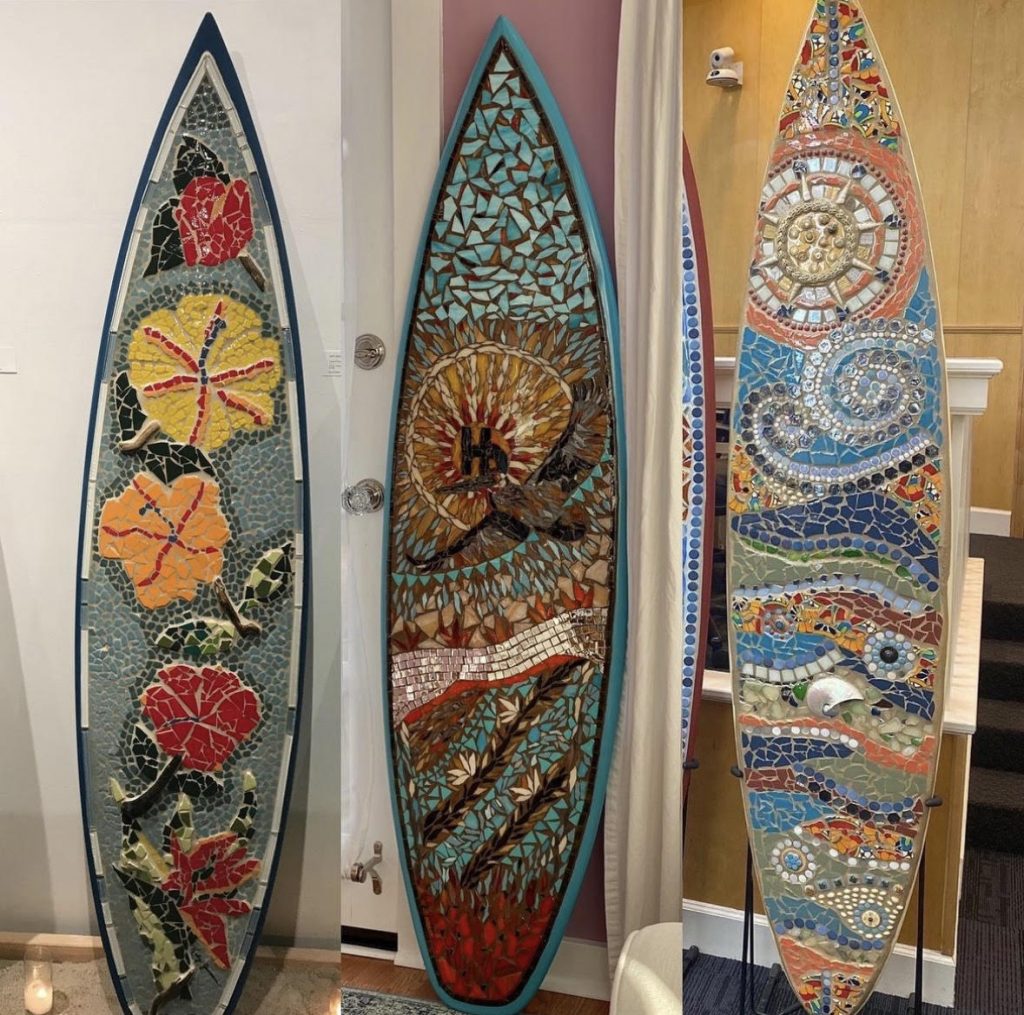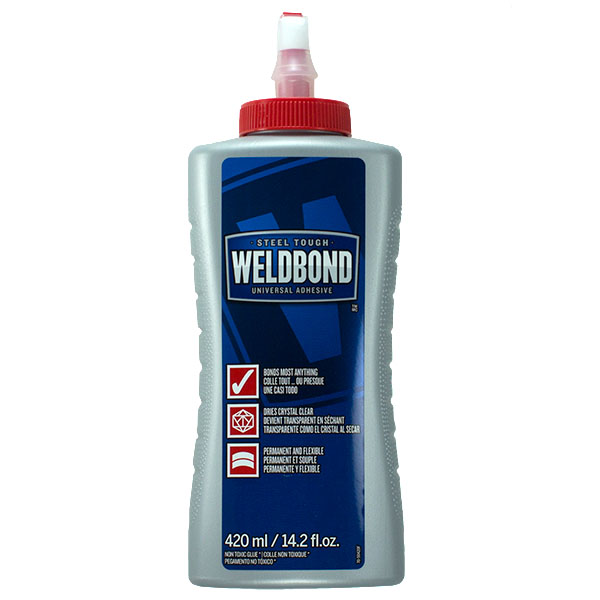Weldbond is a PVA (poly vinyl acetate) adhesive that is the best all-around adhesive for dry indoor mosaic projects and craft projects. It is water based, nontoxic, fume free, archival, easy to clean up, and water resistant when fully cured.
Note that Weldbond is water resistant and not waterproof. There is a significant amount of difference between being water resistant and being waterproof.
That is why our online instructional pages and blog articles always restrict the use of Weldbond for dry indoor projects.
After all, out there on the Interwebs, subtle caveats and not-so-subtle caveats get ignored in equal measure, and we have learned from sad experience that we have to continually goof-proof every product description and page we publish.
That being said, are there some situations where Weldbond might be used outdoors without any problems?
The answer is a qualified YES, but to understand just how many caveats are built into that YES, let’s look at all the different outdoor situations where Weldbond (or any other PVA adhesive) would NOT be appropriate.
Wood or Plywood
If your mosaic backer is wood or plywood or even marine plywood, then it doesn’t matter what adhesive you used because the adhesive isn’t the problem.
The mosaic will soon fail because night/day changes in humidity cause all wood products (even marine plywood) to swell and contract slightly, which cracks grout and causes tiles to pop off the substrate. Usually this happens within a matter of weeks or a few months, sometimes within days.
The mosaic in the photo below was made on marine plywood and failed within a few weeks in a desert climate:

Horizontal or Submerged
If your mosaic is submerged, hopefully no one needs to tell you that a water-based adhesive isn’t recommended.
What is somewhat surprising is that a horizontal surface such as a table top or bench seat is almost as vulnerable as a submerged mosaic.
Whenever it rains for three days straight, you essentially have water standing on the surface for three days straight, and all it takes is one little pinpoint where the grout isn’t properly sealed for water to seep in and get beneath the tile.
Simple solutions to these issues is to round or slant the surface (such as a bench seat) or to remove and store table tops during the rainy winter months.
Standing on the Ground
If your mosaic plaque or sign is leaning against something, but the bottom edge is resting on the ground, then that bottom area is vulnerable.
Of course, lying flat on the ground makes the entire mosaic more vulnerable.
On simple solution to this problem is put stones or bricks underneath the mosaic to raise it slightly off the ground.

“Damp” Climate
If your location has a truly damp climate where things stay wet for extended periods, then Weldbond and other PVA adhesives definitely aren’t recommended for your exterior projects.
What’s not as obvious is that most climates are problematic.
Most locations east of the Mississippi River can experience an entire week of rain at some point, perhaps multiple times in a year, and so even these places can be thought of as having a damp climate for purposes of evaluating materials for architectural artwork.
It doesn’t matter if your weather is mostly arid if you also have brief humid wet periods.
The mosaic failure pictured earlier in the article happened in New Mexico, an arid climate, during a rainy period.
Incidental Water
There is also pipe leaks, cleaning water, irrigation, and other human sources of soaking to consider.
If there is any doubt, assume your outdoor mosaic will be subjected to some incidental water and avoid wood, plywood, and Weldbond.

Weldbond Exterior Mosaic
So what would be an exterior mosaic project where it made sense to use Weldbond?
Well, mosaic plaques and signs under a protective eave or porch would be fine with Weldbond as the adhesive. (Note that wood would still be problematic due to the humidity issue described above.)
Artist Katy Jenssen used Weldbond for her mosaic surfboards, which are sometimes displayed outdoors.
Note that these surfboards are actually the expanded polystyrene cores of surfboards with the fiberglass shells removed.
Weldbond doesn’t adhere well to most plastics, such as those used in the fiberglass shells of surfboards.
Why was Weldbond adequate for these particular outdoor projects?
There are several reasons:
The boards are not wooden or any other material prone to swelling and contracting with changes in humidity
The boards are in a climate that is relatively dry with limited rain.
The boards only spend a limited amount of time outside.
These boards aren’t left sitting on damp soil. The local soil is sandy and well drained.
The dirty little secret is –and I want to whisper this– Weldbond can be highly resistant to brief wetting on rare occasions, especially if it’s not getting wet because the mosaic in front of it is well grouted and well sealed and self-draining by virtue of being rounded, sloped, or vertical.
Outdoor “Adhesive”
The recommended adhesive for exterior and submerged mosaics isn’t an adhesive.
The recommended method for mounting these mosaics is to use thinset mortar instead of adhesive.
Since mortar isn’t as convenient to use as a small bottle of adhesive, most artists find it much easier to lay up the mosaic in advance on Mosaic Mounting Tape or Mounting Paper instead of mounting one tile at a time.
That being said, I have used thinset mortar to attach one found-object at a time using a Grouting Bag modified with a Wilton brand cake decorating nipple, which is shown near the bottom of my page about using thinset mortar for mosaic artwork and sculpture.
I have also used palette knives and putty knives with thinset to install one tile at a time.


Leave a Reply